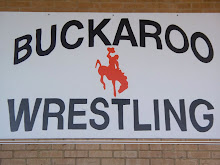The NFHS recently approved the changes to the new weight classes in high school wrestling. Here is the press release on the new weight and some rule changes.
NATIONAL FEDERATION OF STATE
HIGH SCHOOL ASSOCIATIONS
NEWS RELEASE
Weight classes changed in high school wrestling
FOR IMMEDIATE RELEASE Contact: Bob Colgate
INDIANAPOLIS, IN (April 26, 2011) — The most significant changes in weight classes in high
school wrestling in 23 years will take place in the 2011-12 season.
In its April 4-6 meeting in Indianapolis, the National Federation of State High School Associations
(NFHS) Wrestling Rules Committee approved an upward shift of the weight classes, beginning with the
103-pound class moving to 106 pounds, which resulted in new weights for 10 of the 14 classes. The
changes in weight classes, along with 17 other rules revisions, were subsequently approved by the NFHS
Board of Directors.
The 14 weight classes approved by the committee for 2011-12 are as follows: 106 (pounds), 113,
120, 126, 132, 138, 145, 152, 160, 170, 182, 195, 220 and 285. Three middle weight classes – 145, 152
and 160 – were retained, although they are 7-8-9 in order now rather than 8-9-10. The largest weight
class (285 pounds) remains unchanged as well.
“The change in weight classes resulted from a three-to-four year process utilizing data from the
National Wrestling Coaches Association (NWCA) Optimal Performance Calculator,” said Dale Pleimann,
chair of the NFHS Wrestling Rules Committee and former assistant executive director of the Missouri
State High School Activities Association. “The rules committee was able to analyze data from almost
200,000 wrestlers across the country, with the goal to create weight classes that have approximately
seven percent of the wrestlers in each weight class.
“Throughout the process, each state association was kept completely informed and was provided
multiple opportunities for input. The results of the last survey of each state association indicated that the
majority of states favored a change, and the committee listened and acted accordingly.”
The last wholesale shift in weight classes occurred in 1988, when the lowest weight class was
increased from 98 to 103 pounds. The only other changes since then were in 2002, when the number of
classes went from 13 to 14 and the 215-pound weight class became mandatory, and in 2006, when the
275-pound class was increased to 285 pounds.
Among changes in wrestling holds, the Figure 4 around the head has been ruled an illegal
hold/maneuver. Previously, the Figure 4 was illegal around the body or both legs.
“This move was being used by high school wrestlers more and more on the head, so to minimize
the risk of injury, the committee voted to outlaw the Figure 4 on the head as well as around the body and
both legs,” said Bob Colgate, NFHS assistant director and liaison to the Wrestling Rules Committee.
Another significant change was made in Rule 2-1-3, which now makes the boundary line inbounds
and, thus, expands the wrestling area. Previously, a wrestler was out of bounds if he or she was touching
any part of the 2-inch-wide line which marks the wrestling area.
An additional exception was added to Rule 8-2-1 stating that if the second injury time-out is taken
at the conclusion of the second period, and the opponent already has the choice at the beginning of the
third period, the opponent would then have the added choice at the first restart after the beginning of the
third period.
“Previously, at the end of the second period and before the third period, Wrestler A takes his or
her second injury time-out, which now gives the choice to Wrestler B,” Colgate said. “However, it’s
already Wrestler B’s choice by virtue of the original flip of the disk. Therefore, Wrestler B gains no
advantage or benefit from Wrestler A’s second injury time-out. With this change, Wrestler B would now
have his or her choice at the first restart after the beginning of the third period.”
In other changes, a revision in Rule 3-1-13 allows the referee the flexibility to determine his or her
best position to monitor the clock and wrestlers during injury, blood or recovery time-outs. Also,
language in Rule 6-2-2 was changed from “forfeit” to “disqualification” to reflect correct terminology.
The rules committee also devoted considerable time to developing rules for multi-team dual
meets and team-formatted tournaments. Previously, the NFHS Wrestling Rules Book addressed only dual
meets and individually bracketed tournaments. Definitions for individually bracketed tournaments, dual
meet/team-formatted tournaments and combination tournaments will be contained in Rule 1-3.
“In recent years, high school wrestling has moved from dual meets and individually bracketed
tournaments to tournaments incorporating a dual meet/team format,” Pleimann said. “The new Rule 11
will provide rules coverage for this type of tournament format.”
“High school wrestling is in great shape across the country as participation numbers continue to
increase. The rules committee did propose 18 changes to the rules book, but approximately two-thirds
of those changes resulted from incorporating the new dual meet/team format rules,” Pleimann added.
The final change is one that has been approved by the NFHS Board of Directors for use in all
NFHS rules books regarding the meet referee’s jurisdiction. The rule extends the clerical duties of the
referee beyond the end of the meet through the completion of any reports required from actions that
occurred while the referees had jurisdiction.
Points of emphasis adopted by the committee for 2011-12 include communicable diseases, injury
time-outs, coach/referee conference, and concussion recognition and management.
Wrestling is the sixth-most popular sport for boys at the high school level with 272,890
participants in 10,363 schools during the 2009-10 season, according to the NFHS Athletics Participation
Survey. In addition, 6,134 girls were involved in wrestling in 1,009 high schools.
Tuesday, April 26, 2011
Friday, April 8, 2011
Buckaroo Awards Banquet 2011
The Buckaroo Wrestlers held the annual awards banquet March 22, 2011. Tony Martinez was honored for all is many years of service helping with Buckaroo Wrestling and with the Rowdy Boys youth program.
Outstanding Wrestler-
Brian Robinson, State Champion, Region Champion, 30 win club
2011 Senior Wrestlers and Coaches.
Other Buckaroo Wrestlers Honored:
Nephi Barlow, Region Champion
Hunter Bowring, State Runner-up, 30 win club
Austin Wilcox, Region Champion
Dailyn Warren, 30 win club, School Reversal Record Holder (46)
Special Thanks goes to Tamra Cordasco for putting together the dinner!
Also honored was Senior Statistician, Aubrey Musselman
Most Improved Wrestler-
Tim Ryan, Region Champion, 4th @ State
Most Inspirational- Kelland Brewer
Most Valuable Wrestler-
C.J. Cordasco (Senior) 2x State Champion 2010 & 2011, Region Champion, 2011 Captain, 2011 Best Record 28-2
Outstanding Wrestler-
Coltan Musselman, (Senior) 2008 State Champion 119, 3x State Runner-up, 2011 Captain, 30 win club
Outstanding Wrestler-
Brian Robinson, State Champion, Region Champion, 30 win club
John Mayne- (Senior) 2011 Captain, 4th @ State
Trevor Wagstaff (Senior) 3rd @ State
2011 Senior Wrestlers and Coaches.
Other Buckaroo Wrestlers Honored:
Nephi Barlow, Region Champion
Hunter Bowring, State Runner-up, 30 win club
Austin Wilcox, Region Champion
Dailyn Warren, 30 win club, School Reversal Record Holder (46)
Special Thanks goes to Tamra Cordasco for putting together the dinner!
Subscribe to:
Comments (Atom)
















